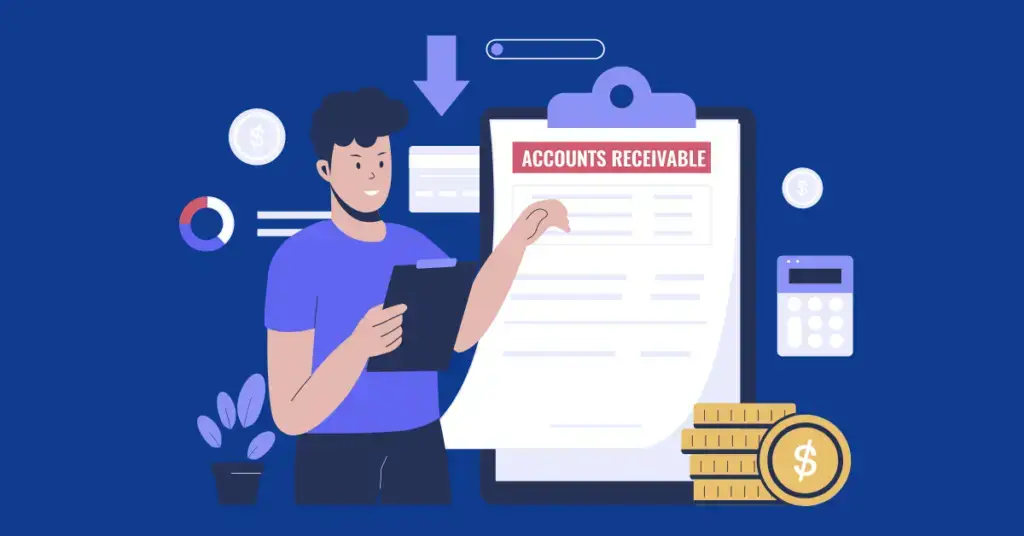Managing cash flow is crucial for maintaining financial stability and promoting growth in every business. A key metric in understanding your business’s financial health is Accounts Receivable Days Outstanding (ARDO). This measurement reveals how long a company takes to collect customer payments, directly impacting its liquidity and cash flow.
In this blog, we will dive into what ARDO is, why it’s essential, how to calculate it, and ways to improve it. Mastering the understanding and management of ARDO will help ensure your business remains on solid financial ground.
What Are Accounts Receivable Days Outstanding?

Accounts Receivable Days Outstanding (ARDO) is a financial metric that indicates the average number of days a company takes to collect customer payments after issuing an invoice. This key figure reflects the efficiency of the company’s collections process and its ability to convert credit sales into cash.
For businesses offering products or services on credit terms, ARDO provides a clearer picture of how effective their credit management strategies are. A low ARDO typically means that customers pay their bills quickly, leading to stronger cash flow. On the other hand, a high ARDO may indicate delays in collections, which could lead to cash flow problems or the need for external financing.
In some industries, it’s normal for businesses to offer extended payment terms. For example, companies in the manufacturing sector might have an ARDO target of 30 days, while those in retail may aim for 45 days. However, every business should ensure that their accounts receivable days outstanding aligns with their cash flow needs and credit policies.
The Importance of Accounts Receivable Days Outstanding
Understanding and managing ARDO is vital for several reasons:
1. Cash Flow Management
The most immediate impact of ARDO is on your business’s cash flow. If you consistently have a high ARDO, your company might experience periods where cash is tight because customer payments are delayed. This could result in difficulty covering operational costs such as payroll, supplier payments, and other obligations.
2. Operational Efficiency
By tracking ARDO, you can gauge the efficiency of your accounts receivable collections process. A high ARDO suggests inefficiencies in your collections process, which might include late invoice deliveries, lax follow-ups, or insufficient credit assessments for customers. Monitoring this metric will help you fine-tune these processes and improve overall business efficiency.
3. Financial Health Indicator
A higher-than-average ARDO could indicate that your business is offering too lenient credit terms, which may jeopardize its financial health. It also reflects poorly on your accounts receivable management strategies. Conversely, a low ARDO suggests that your company has strong credit management and collection processes, keeping your business’s liquidity intact.
4. Customer Creditworthiness
Analyzing your ARDO can provide insights into the creditworthiness of your customer base. If most of your customers are delaying payments, it may be time to reassess your credit approval criteria. It’s essential to ensure that customers are financially capable of meeting payment terms to avoid accumulating bad debts.
5. Ability to Invest and Grow
Businesses with a low ARDO have better liquidity, allowing them to invest in growth opportunities, such as expanding into new markets, upgrading technology, or hiring additional staff. A high ARDO may prevent these opportunities because cash is tied up in unpaid invoices.
How Are Accounts Receivable Days Outstanding Calculated?

To manage ARDO effectively, it’s essential to understand how it’s calculated. The accounts receivable days outstanding calculation relies on two key variables: total credit sales and average accounts receivable balance.
Here’s a step-by-step breakdown of how to calculate ARDO:
- Determine Total Credit Sales: These are sales made on credit, not including cash sales, for a specific period (e.g., a quarter or a year).
- Calculate Average Accounts Receivable: To find this, add the beginning and ending accounts receivable balances for the period and divide by two.
- Choose the Number of Days: This is typically 365 days for a year but can be adjusted if you’re analyzing a shorter time frame like a quarter (90 days) or a month (30 days).
Once you’ve gathered these figures, you can plug them into the formula.
Accounts Receivable Days Outstanding Formula
The formula for calculating ARDO is: ARDO=(Accounts Receivable/Net Credit Sales)×Number of Days
Where:
- Accounts Receivable is the average accounts receivable balance for the period.
- Net Credit Sales refers to the total sales made on credit, excluding returns and allowances.
- Number of Days is typically 365 for annual calculations or 30/90 for shorter periods.
For example, let’s assume a business has average accounts receivable of $50,000, net credit sales of $200,000, and you’re calculating the ARDO for one year (365 days): ARDO=(50,000/200,000)×365=91.25 days
This means the business takes an average of 91 days to collect its receivables, which could be considered high depending on the industry standard.
How to Improve Accounts Receivable Days Outstanding

Improving your ARDO is essential to maintaining a healthy cash flow and ensuring the long-term financial health of your business. Here are several strategies you can employ to reduce ARDO:
1. Implement Stricter Payment Terms
Tightening your payment terms can shorten the time customers have to pay their invoices. For example, instead of offering 60-day terms, you could reduce them to 30 days. Communicate these terms to customers upfront to avoid confusion or delays.
2. Incentivize Early Payments
Offering discounts or other incentives for early payments can encourage customers to settle their invoices sooner. For instance, you could offer a 2% discount if the invoice is paid within 10 days instead of the usual 30-day window. This not only reduces ARDO but can also improve customer loyalty.
3. Proactive Collections
Adopting a proactive approach to collections is critical for reducing ARDO. Send reminders to customers before the invoice due date and follow up regularly after the invoice is issued. Consider sending automated payment reminders to streamline the process.
4. Make Payment Methods Convenient
The easier it is for customers to pay you, the faster you’ll get paid. Offering multiple payment options, such as credit card payments, online bank transfers, or mobile payment platforms, can reduce friction in the payment process and lower ARDO.
5. Use Accounts Receivable Automation
Automating your accounts receivable process with software can greatly improve efficiency and accuracy. Automation reduces manual data entry errors, sends out invoices automatically, and can even generate reminders for overdue accounts. It also provides you with real-time data on outstanding receivables, helping you monitor ARDO more effectively.
6. Assess Customer Creditworthiness
Revisiting your credit policies to ensure you’re only extending credit to customers with good credit histories can help lower ARDO. Performing credit checks on new customers and regularly reviewing the financial health of existing customers will allow you to minimize late payments and reduce the risk of bad debts.
Conclusion
Accounts Receivable Days Outstanding is a critical financial metric that measures how efficiently your business collects payments from customers. A high ARDO can lead to cash flow problems, limit growth opportunities, and increase the risk of insolvency, while a low ARDO demonstrates strong financial health and effective accounts receivable management.
By understanding how to calculate ARDO and implementing strategies to improve it, your business can maintain healthy cash flow and reduce the risk of financial disruptions. Monitoring and improving ARDO will allow your company to operate more efficiently and capitalize on growth opportunities.
Investing in the right accounts receivable software for growing businesses can streamline the collections process. Automating tasks such as invoicing and reminders will help reduce your ARDO and improve overall financial performance.
Related Content






